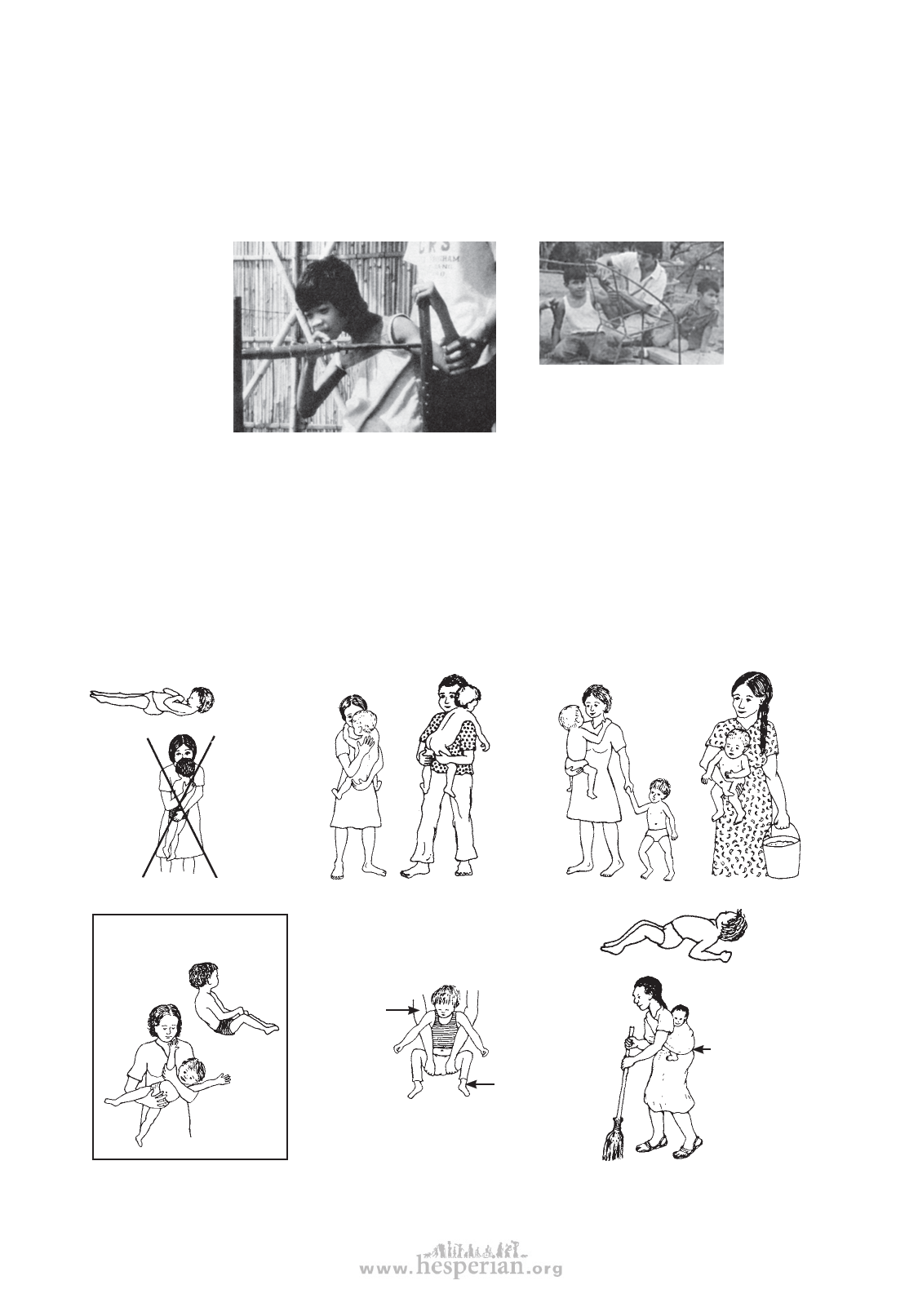
100 chapter 9
Hand use
Try to find ways that the child can play or do things using her hands while she is in the
corrective positions of sitting, standing or lying.
Encourage her to touch, feel, and handle as many different shapes and surfaces as
possible: things that are big, small, hot, cold, sticky, smooth, prickly, hard, soft, thin, and
thick.
This girl in the
rehabilitation
center of the
Khao-i-dang
refugee camp in
Thailand develops
hand control by
sliding colored
rings on a pole.
A boy with cerebral palsy at the
PROJIMO rehabilitation center
helps paint a chair frame.
For more ideas of developing use of the hands, see p. 305.
CORRECTIVE CARRYING POSITIONS
As in other activities, try to carry a child in positions that work to correct abnormal
positions.
If the child usually
lies with arms bent
and legs straight,
Carry him
in ways that
straighten
his arms
and bend
his knees
and hips.
As the child
gains more
control, you
can carry
him with
less support.
do not
carry him
like this
The child with
spasticity who
is usually
curled up,
can be
carried
like this.
The child with severe spasticity who
tends to straighten and arch backward
can be carried like this.
Pushing
shoulders
up helps
relax tight
spasms of
the legs.
Holding the
child by his
inner thighs
helps turn legs
out as they
separate.
For play, you can swing the child in
the air in this position.
For other good carrying positions, see p. 303.
Disabled village Children
While working,
you can carry
the baby with
legs spread
across your
hips or back, as
is the custom
in many
places.